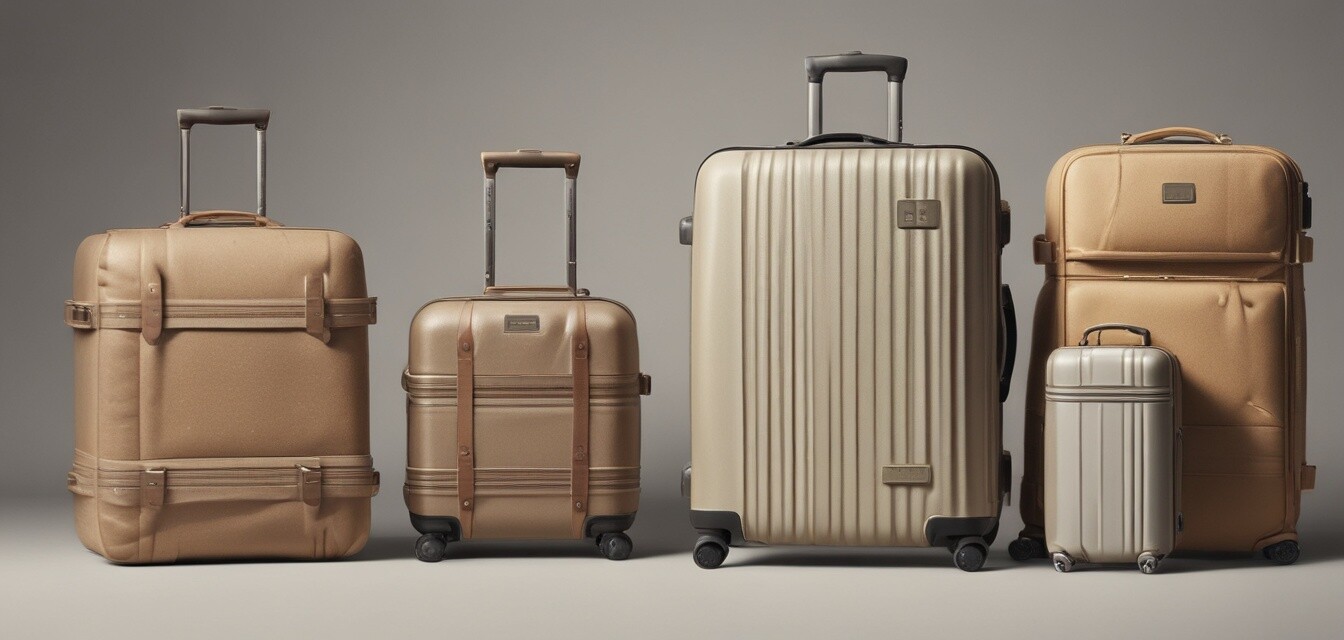
Exploring Eco-Friendly Luggage Materials
Key Takeaways
- Eco-friendly luggage materials are gaining popularity among travelers.
- Brands are increasingly committing to sustainable practices in luggage design.
- Recycled polyester and organic cotton are leading materials in eco-friendly luggage.
- Sustainability doesn't compromise on style and functionality.
- Choosing eco-friendly luggage contributes to a greener environment.
As more travelers seek ways to decrease their environmental footprint, eco-friendly luggage has become a hot topic in the travel accessories market. This article dives into the new materials being used in luggage design and highlights brands committed to sustainable practices.
The rise of eco-friendly luggage
In recent years, the luggage industry has started to embrace sustainability. A notable shift is observed as brands innovate by utilizing eco-friendly materials. These advancements not only appeal to environmentally-conscious consumers but also set a precedent for responsible manufacturing. Below, we explore some of the key materials transforming the luggage landscape.
Common eco-friendly materials used in luggage
| Material | Description | Benefits |
|---|---|---|
| Recycled Polyester | Made from recycled plastic bottles, this material reduces waste. | Durable, lightweight, and supports recycling initiatives. |
| Biodegradable Fabrics | These are designed to decompose naturally over time, reducing landfill waste. | Environmentally friendly and lowers ecological impacts. |
| Organic Cotton | Grown without synthetic pesticides and fertilizers, making it sustainable. | Soft, durable, and contributes to better agricultural practices. |
| Hemp | A robust plant material that requires fewer resources to grow. | Biodegradable and often grown without chemicals. |
| Recycled Rubber | A material recycled from tires and other rubber products, often used in zippers. | Strong and durable, extending the life of luggage components. |
Brands pioneering sustainable luggage
Several brands are at the forefront of eco-friendly luggage production, incorporating sustainable practices and materials into their designs. Here's a look at some of the brands leading the charge.
- Brand A: Known for its commitment to using 100% recycled materials in their luggage.
- Brand B: Offers a range of biodegradable luggage solutions, combining style and environmental consciousness.
- Brand C: An innovator in using organic cotton and hemp for their travel bags, ensuring a minimal ecological impact.
Comparing traditional vs. eco-friendly luggage
| Aspect | Traditional Luggage | Eco-Friendly Luggage |
|---|---|---|
| Materials | Plastic, synthetic fabrics | Recycled materials, biodegradable fabrics |
| Environmental Impact | High; contributes to plastic waste | Lower; focuses on sustainability |
| Durability | Varies; may break down over time | Generally high; designed for longevity |
| Style Options | Wide variety | Increasing options, trendy designs |
Impact of eco-friendly luggage on travel behavior
Travelers are increasingly making choices that reflect their environmental values. By selecting eco-friendly luggage, they become part of a broader movement aimed at reducing waste and supporting ethical practices. Travelers who prioritize sustainability often report a greater sense of responsibility and satisfaction, knowing their choices impact the environment positively. To explore more travel tips that align with sustainable practices, visit our Travel Tips section.
Final thoughts on eco-friendly luggage
The trend towards eco-friendly luggage is not just a passing fad; it reflects a larger shift in consumer behavior towards sustainability. As brands continue to innovate and prioritize the environment in their production processes, more travelers will have access to stylish, durable, and eco-friendly luggage options. By choosing eco-friendly products, you’re contributing to a healthier planet and encouraging brands to adopt sustainable practices.
Pros
- Reduces environmental impact.
- Encourages brands to adopt sustainable practices.
- Available in various stylish designs.
- Often more durable than traditional options.
Cons
- Can be more expensive than traditional luggage.
- Less brand recognition for some sustainable products.